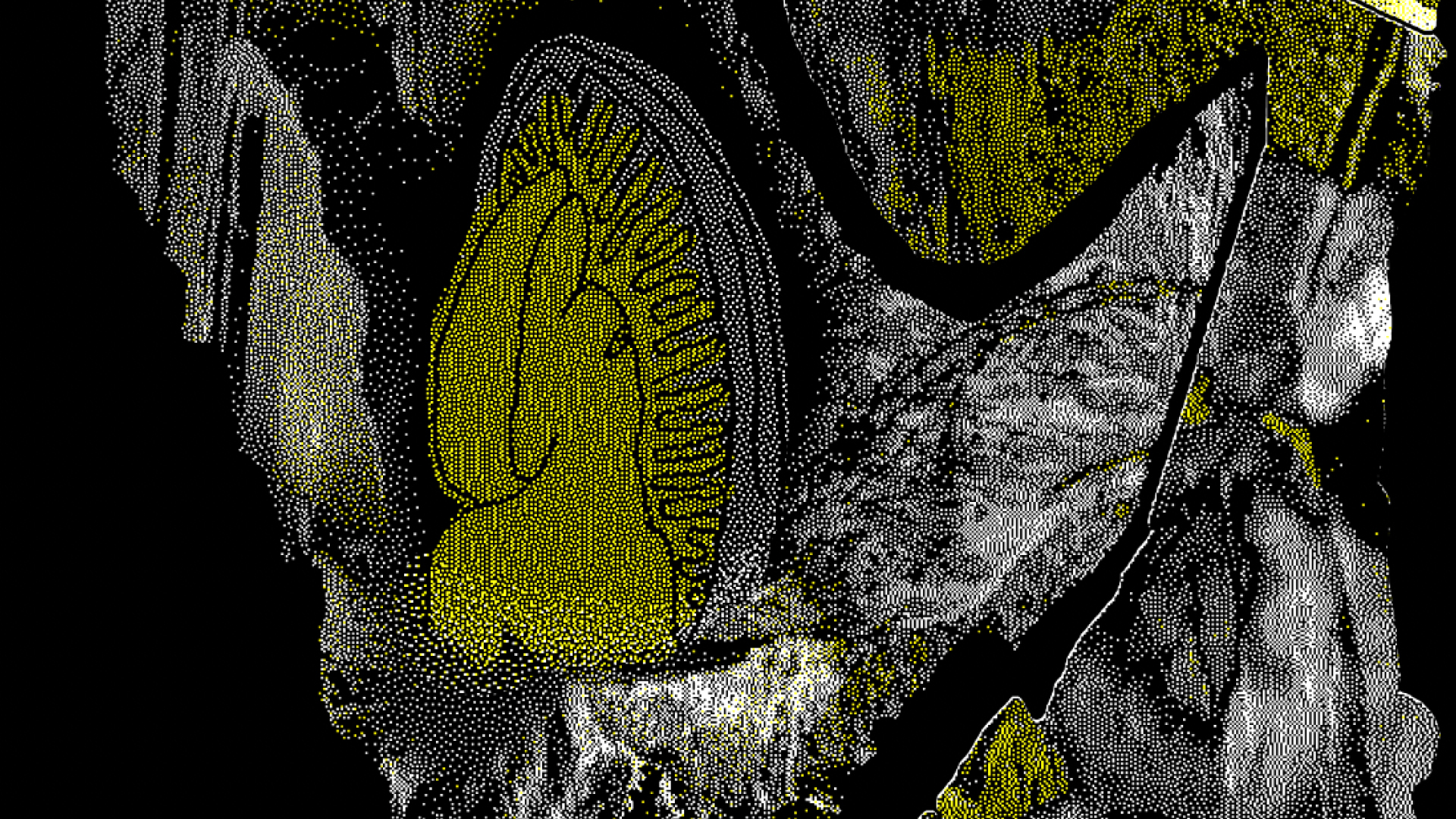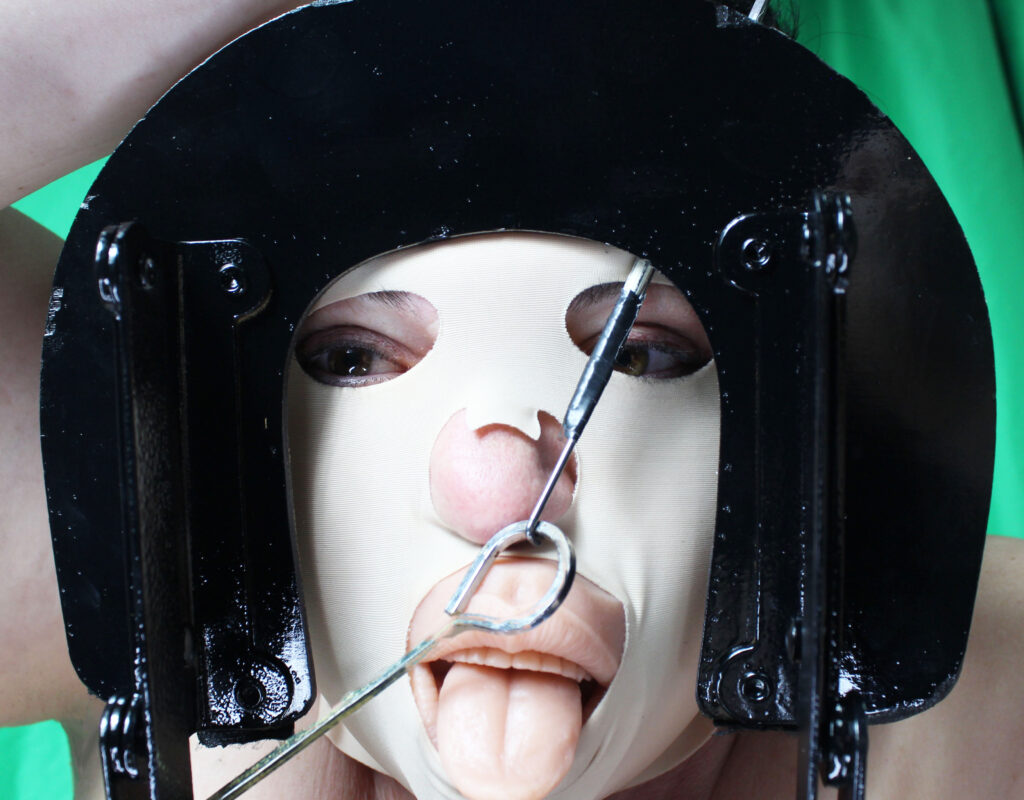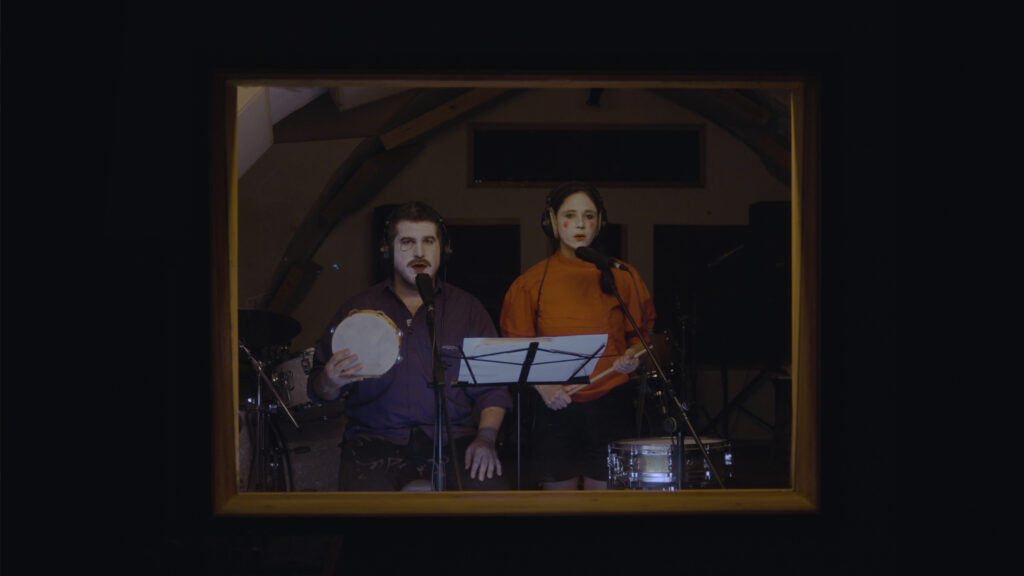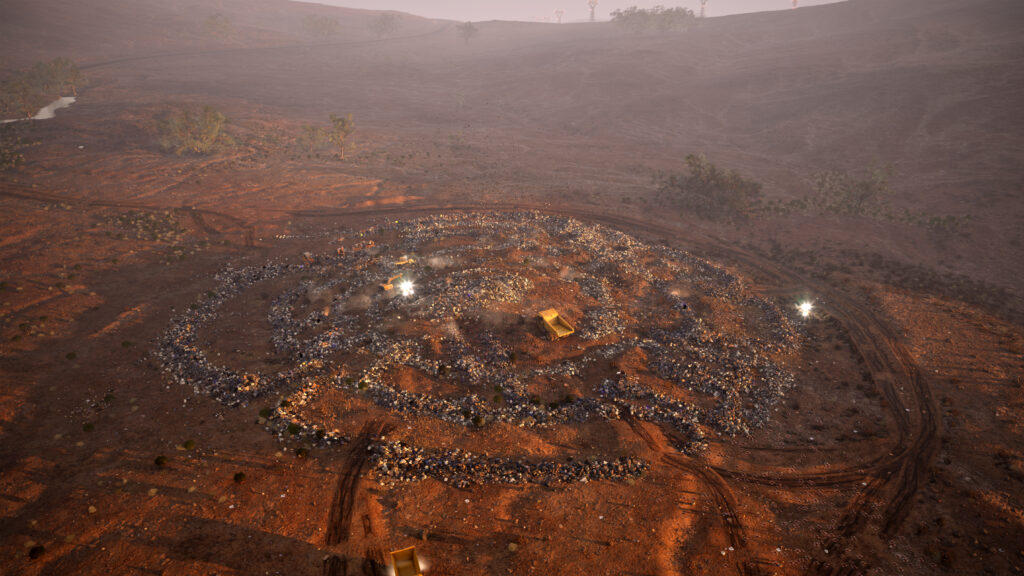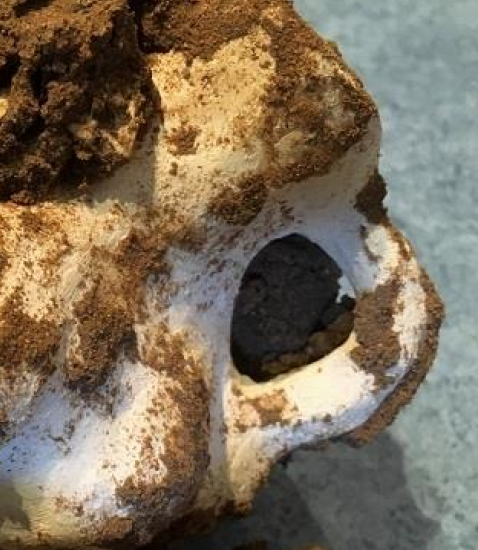Maintaining the Question
The exhibition Maintaining the Question seeks to map-out new strategies of action within an ever-changing world. The central idea behind the exhibition is the possibility of living in the unknown, staying with the question without trying to solve it, bypass it or defeat it — chaos is here to stay. It is time to produce new tools or directions of thought that will assist us to be present in this unstable reality, and to live within the uncertainty. The works in the exhibition create various environments that aim to activate the viewer, in a range of mediums: video, installation, drawing, sound and sculpture, thus generating an active space of learning and observation. The viewers are not passive, but rather in a state of learning, as they are invited to participate in the practices that the artworks suggest. The exhibition becomes an energetic space of change that finds its way to connect with the visitors.
The work Mother Opium by artist Sagit Mezamer is a result of a vast research process of drug addictions in general, and the use of opiates in particular. In the course of two years, she explored early representations of opium rituals, while also conducting conversations with opiate drug addicts. The video work in the exhibition is dedicated to a personal encounter with Danny Levy, a former DJ, who has been dealing with addiction for over 20 years. Mezamer has held a series of meetings with Levy, in which he told her about his use of opiates and his particular rehab process, which included the use of the Iboga root. This plant was discovered by the West during the 1960s to be an effective medicine for difficult rehab processes. The source of the use of the Iboga root is the Bwiti religion in Africa, whose people have been using it for over 1,500 years, as part of healing ceremonies, in religious practices, and in order to reconnect people who have become detached from the community due to mental or physical difficulties.
In the installation Music for the Extinct Butterfly 2 artist Eitan Ben-Moshe places a number of mattresses on the floor, while at the edge of each mattress he attached a sound-producing mobile. The visitor is welcome to lay on the mattress and enter a meditative state; to be influenced by the sounds, to be present in the moment, and to rest. Healing, the early work by artist Moti Mizrahi consists of a series of actions that were realized on him and on another participant, functioning as a healing guide to the aching, ill body. Mizrahi, the most prominent artist who combined Shamanic practices in his works during the 70s, focused on physical wounds as symbols of the tension between life and death, as well as between health and illness.
In Faye Shapiro‘s work How Much Love Passes viewers are invited to put their hand in a box. If a contact with another person’s hand takes place — a song begins to play. At a time when the act of touching one another isn’t taken for granted, the artist offers a return to the basis of the human experience through physical contact and sound. The work asks the viewers for their full presence. Without the actual contact, the music of the piece cannot be heard. It requires the participants to connect with life and with one another. Guy Dubius‘s work Bleeding also encourages the viewer to intervene and to become a significant part of its performative aspect. This piece consists of three different performances that resonate in the space through a cardboard box that also contains a small radio, broadcasting am radio stations. A microphone receives the sound created by those who enter the space, and transmits it to the radio stations. The viewer is invited to play with the radio and search for these stations. This particular combination of elements generates a suspension; a moment in which we can connect to the work not with our minds, but through sounds and vibrations. Bretoni’s Cat, a work by Kim Teitelbaum, engages with the purring sounds that cats make. This sound holds healing abilities — it is soothing and lowers the rate of one’s heartbeats. The artist, dressed as a cat, while moving to the beat of the purring sound, embodies the ability to connect with our spirit animal.
Douglas Paulson‘s work Lets Talk is based on conversations with residents in Jesse Cohen, who were requested to answer specific questions, and were then invited to suggest a new question, which was handed to another person. This created a chain of questions that shed light on the spirit of our times. Working with the format of a comic book relates to the state we are living in: for every question answered, a new question arises
In the work The Plover’s Wing, Marcus Cuates (a London-based artist and birdwatcher) offers his services of communicating with the spirit world to the Mayor of Holon, Moti Sasson, in order to help him solve a problem. His question is not resolved at municipal meetings, but rather by connecting to the spirits of the past. Therefore, the artist suggests an open answer, which can be perceived as a question by itself. Ricky Elkayam, in her work Ballad for a Woman creates a mobile made of crystals, roots, sculpted silk, skeletons of sea urchins and other elements. The work is influenced by the theory of anthroposophy, in which the materials of the object communicate and transfer energy through which we can connect to the worlds beyond.
Curator:
Meir Tati
Artists:
Eitan Ben-Moshe, Marcus Cuates, Guy Dubius, Ricky Elkayam, Moti Mizrahi, Sagit Mezamer, Douglas Paulson, Faye Shapiro, Kim Teitelbaum
